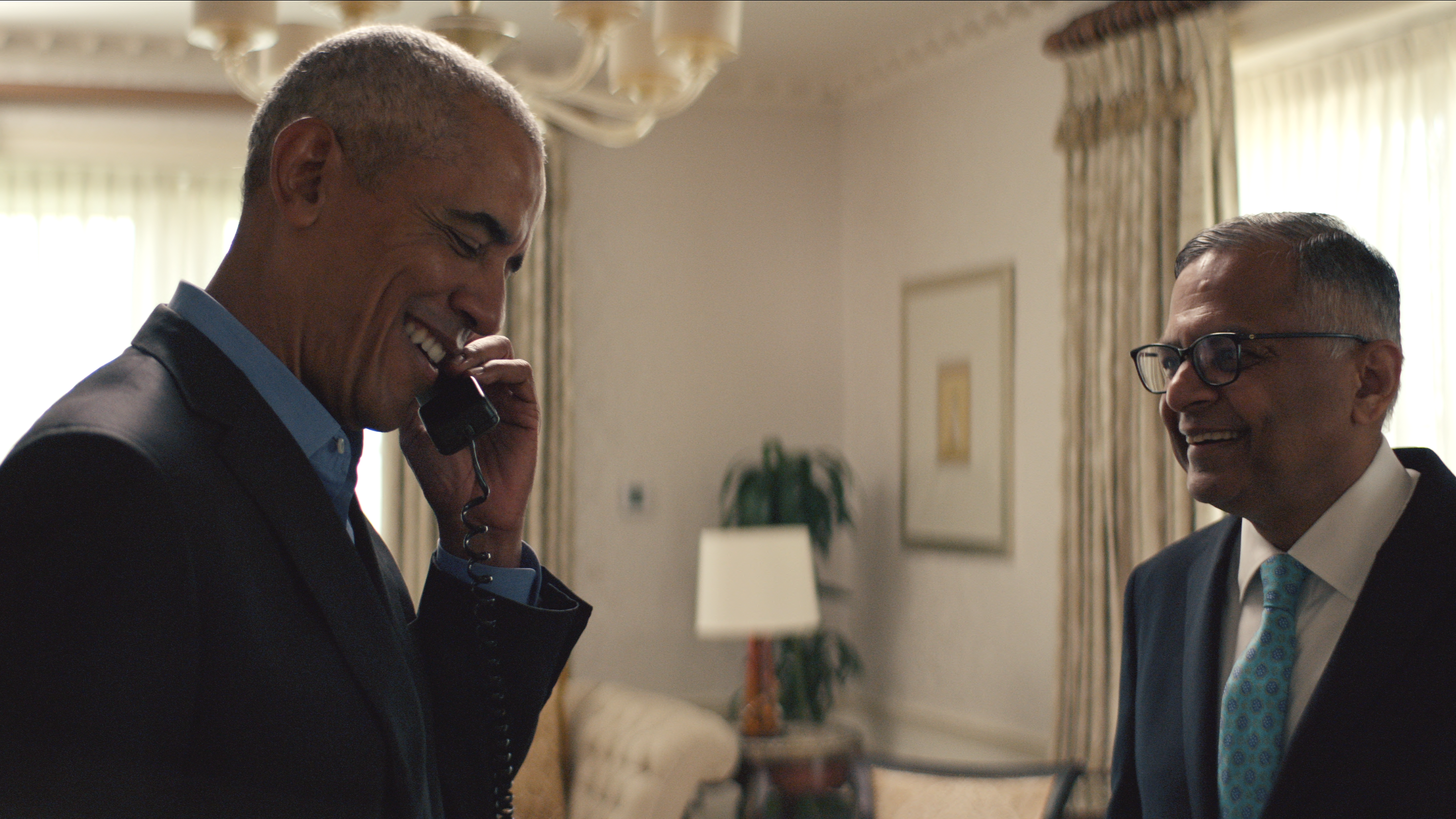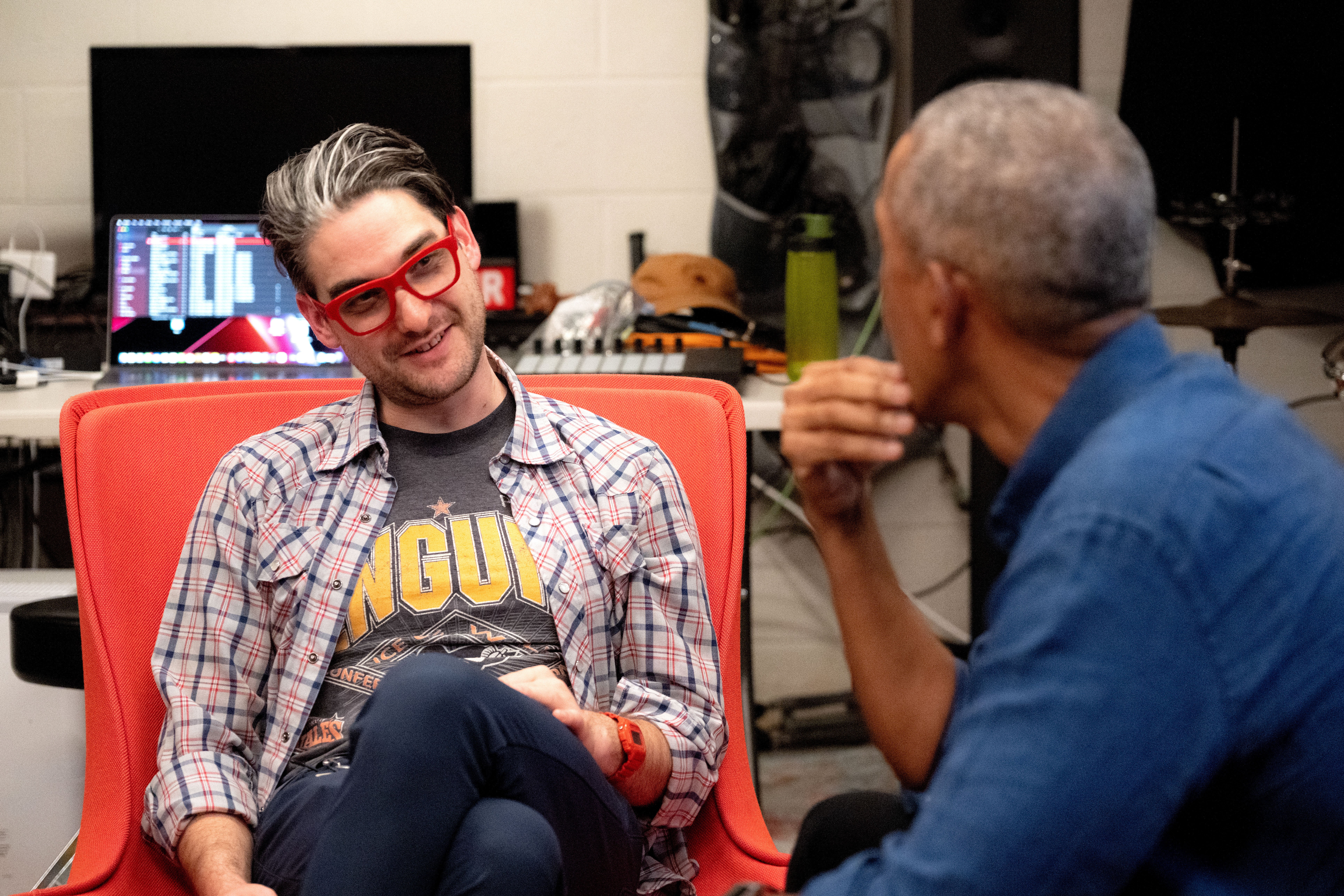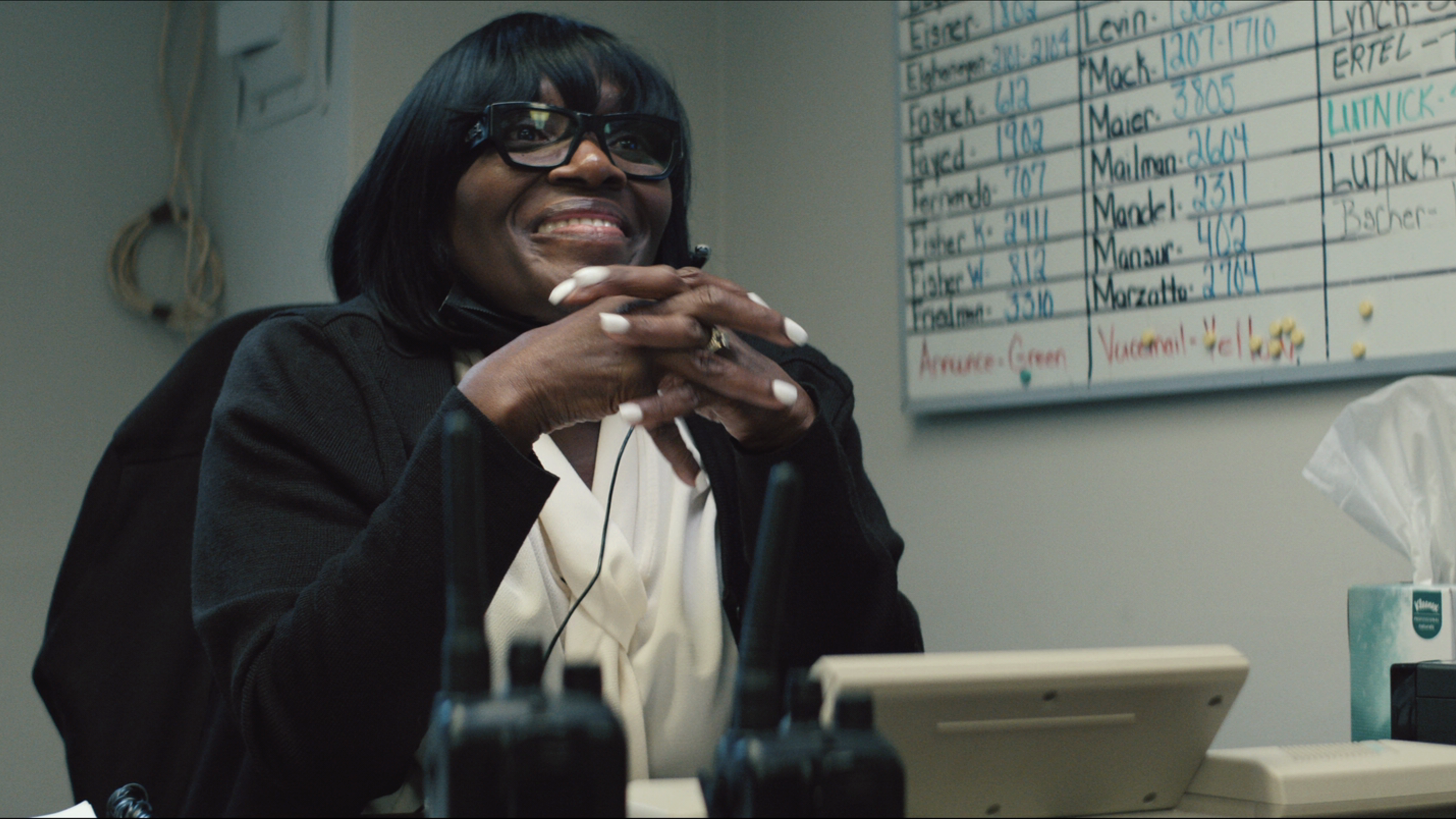Barack Obama held the nation’s highest job. Now, he’s exploring what work looks like for millions of Americans
Years removed from the White House, Obama set out to explore the current state of labor and the job market in a new documentary. Director Caroline Suh tells Clémence Michallon what went on behind the scenes


On a normal day years after leaving his post as the leader of the free world, Barack Obama shops for groceries with Randi, a young mother who has struggled to find work that enables her to care for her young child.
Does Randi think it has become harder for people to achieve an existence where they own a home, pay their bills, and care for their children, Obama asks?
“Yes,” Randi says. When Obama asks her why, she points to the cereal aisle in which they have found themselves: “It’s $6.12 for a box of cereal,” she tells him. “I make $10 an hour. That’s one hour of my paycheck gone, [with] a couple of candies.”
Shortly afterward, Randi tells him: “I’ve got a question for you.” When Obama tells her to go ahead, she turns to him and asks: “Are you at peace? Now?” Obama, pushing the grocery cart, answers that question between the frozen aisle and the soda aisle, in a meaningful moment that somehow doesn’t end up putting the focus on him, but harkens back to the situation of Randi and other workers like her.
This is one of the most revealing, captivating scenes in the new Netflix documentary Working: What We Do All Day, a four-part, frank, no-nonsense, human investigation into work, labour, jobs, and the ways in which they serve and fail us. Working comes from Higher Ground, the production company founded by Barack and Michelle Obama in 2018, and Concordia Studio, another production company. Obama not only served as an executive producer, but also stars in and narrates parts of each episode.
When Caroline Suh, the documentary filmmaker behind Salt Fat Acid Heat and Blackpink: Light Up the Sky, was approached to direct a new series about work, she initially wanted no part in it. “My immediate reaction was like, ‘No,’” she tells The Independent in a phone interview. “Who wants to think about that?”
But then, Suh heard that Barack Obama would be involved, and promptly reconsidered. “When I heard the president was involved, I immediately changed my mind,” she says.
The former president, in fact, shaped the series from its inception. According to Suh, the team behind Working spent around nine months developing the show before production began, researching key concepts. And, yes, Obama was very involved this early on.
“Work is so many things, and we wanted to get a handle on what the reality of work is now for people – what kind of jobs people have, what are good jobs, what are bad jobs, why good jobs are good jobs, and why bad jobs are bad jobs,” Suh says. “The president gave us a bunch of themes that he wanted to explore, like women’s work, automation and unions. It took a long time to look at the history, and what’s going on now, and what’s going on in the future, to even decide how we would approach the series.”

After that development period came filming, which took place between 2020 and 2022. Working is openly inspired by the 1974 nonfiction book Working: People Talk About What They Do All Day and How They Feel About What They Do, by the broadcaster Studs Terkel, who explored the working lives of multiple participants. The documentary brings that project to the modern age.
Each episode looks at work through a different lens, reflected in their titles: “Service Jobs”, “The Middle”, “Dream Jobs”, and “The Boss”. We meet a rich cast of participants. There is Randi, who gets trained as a home care aide in Mississippi. There is Carmen, a delivery driver for Uber Eats in Pittsburgh. There is Luke, a data manager at Aurora Innovation, a self-driving technology company, also in Pittsburgh. There is François, the general manager of the five-star Pierre hotel in New York.
The Pierre, in fact, acts as a throughline in the documentary. Episode one features Elba, a housekeeper at the hotel. Episode two features Beverly, who works there as a switchboard operator. Episode three features François, and episode four features Natarajan Chandrasekaran, the chair of Tata Sons, the parent company of the Tata Group, which itself includes the Indian Hotels Company, which includes the Taj Hotels brand, which includes the Pierre.
Every episode begins with a vignette featuring Obama (he might be delivering their lunches to home care workers in Mississippi, or ordering green salad and French fries for a lunch with Chandrasekaran), then shifts to the participants, with some explanatory vignettes narrated by the former president. Each episode then ends with Obama interacting with the participants.
Those sequences are among the most revealing, not only because – yes – Obama is still ridiculously good at projecting warmth, empathy and humor, but also because the participants themselves seem profoundly at ease in his presence.
Did they need any guidance, I wonder, in order to feel at ease interacting with the former president? Suh tells me they didn’t, mainly because by the time they filmed their scenes with Obama, they had grown used to having cameras filming them, and they had built a rapport with the documentary crew over time. Obama’s personality did the rest.
“The president truly is amazing at making people feel at ease,” she says. “It’s like a gift, because when he enters a room, it totally destabilises everything. Grown men who work on the crew, who’ve been on so many shoots – they were like little kids meeting him. They were sharing, and they were so excited, comparing handshakes with each other, like, who got up this kind of handshake. People cry, people laugh. People lose their minds. I imagine it’s like when the Beatles come to town or something.”


The logistics of filming with a former president were captivating, Suh says: “Everyone on their team is so pro at moving in with all the Secret Service and making sure everything’s safe. It is fascinating to see that organism move the world, and it makes you realize how really tough it is to be at the center of that. You can’t really do anything by yourself. There are always all these people around.”
Working isn’t just about the specific jobs and occupations portrayed on screen, nor is it just about Obama having meaningful conversations with a wide array of American workers – although those two elements do plenty of work. The documentary is solidly grounded in its research, and does an efficient job at contextualizing each episode to make a broader point.
A one-minute sequence narrated by Obama in episode one, about current executive and former janitor Gail Evans, is an amazingly concise illustration of how work has become less effective at providing workers with opportunity and a path to progression. Multiple sequences highlight the importance of unions in protecting workers amid industry shifts. Comparisons between the present and the past are especially damning. “In 1970, a CEO made about 30 times the typical worker,” Obama says in episode four. “Today, they make up 350 times more.”
Those explanatory passages work, because they echo what we witness on the screen: everyone in Working works, and works hard, but not everyone can make ends meet, afford a middle-class lifestyle, or find work compatible with their caregiving obligations.
While working on the documentary, Suh and her team used to say that if the series made people better tippers, they would be happy. She also hopes it will prompt others to “see the people around us a lot more.”
“I think it will make people more aware of each other, and more appreciative,” she says.
Working: What We Do All Day streamings starting 17 May on Netflix US and UK



Bookmark popover
Removed from bookmarks